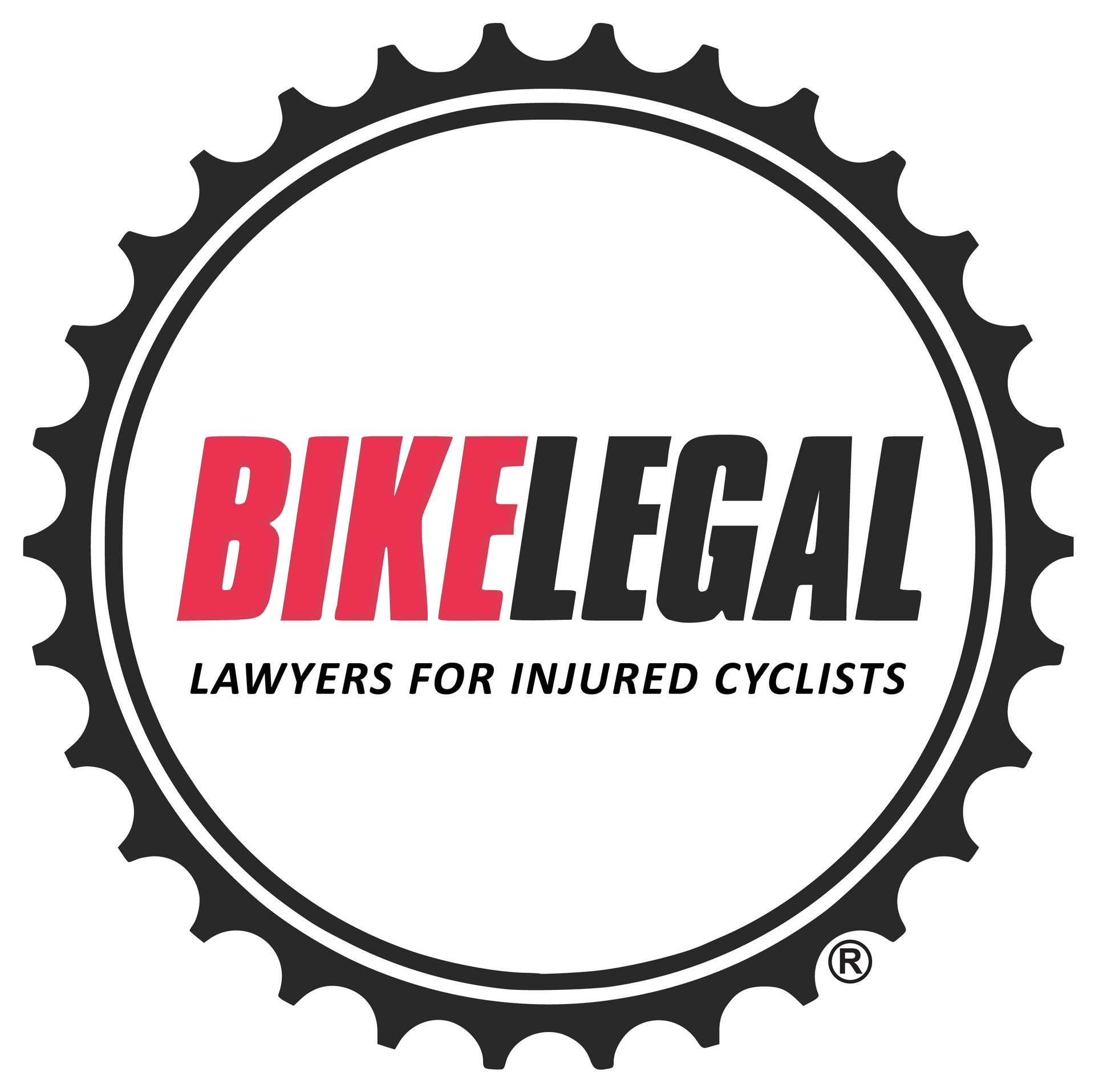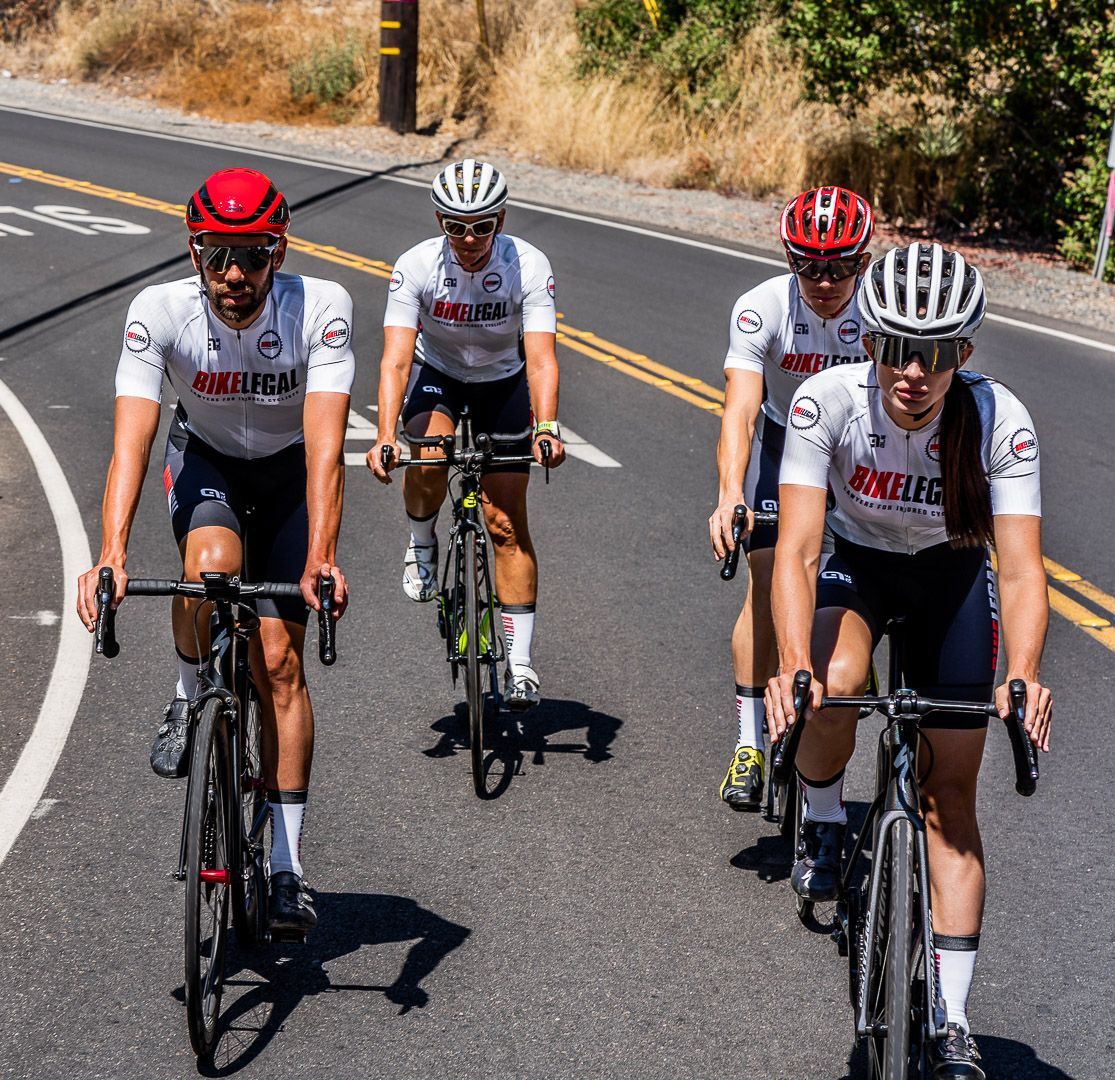Do Cyclists Have to Stop at Stop Signs? (Updated for 2024)
Follow us on
social media!
The Stop as Yield for Cyclists Varies State by State
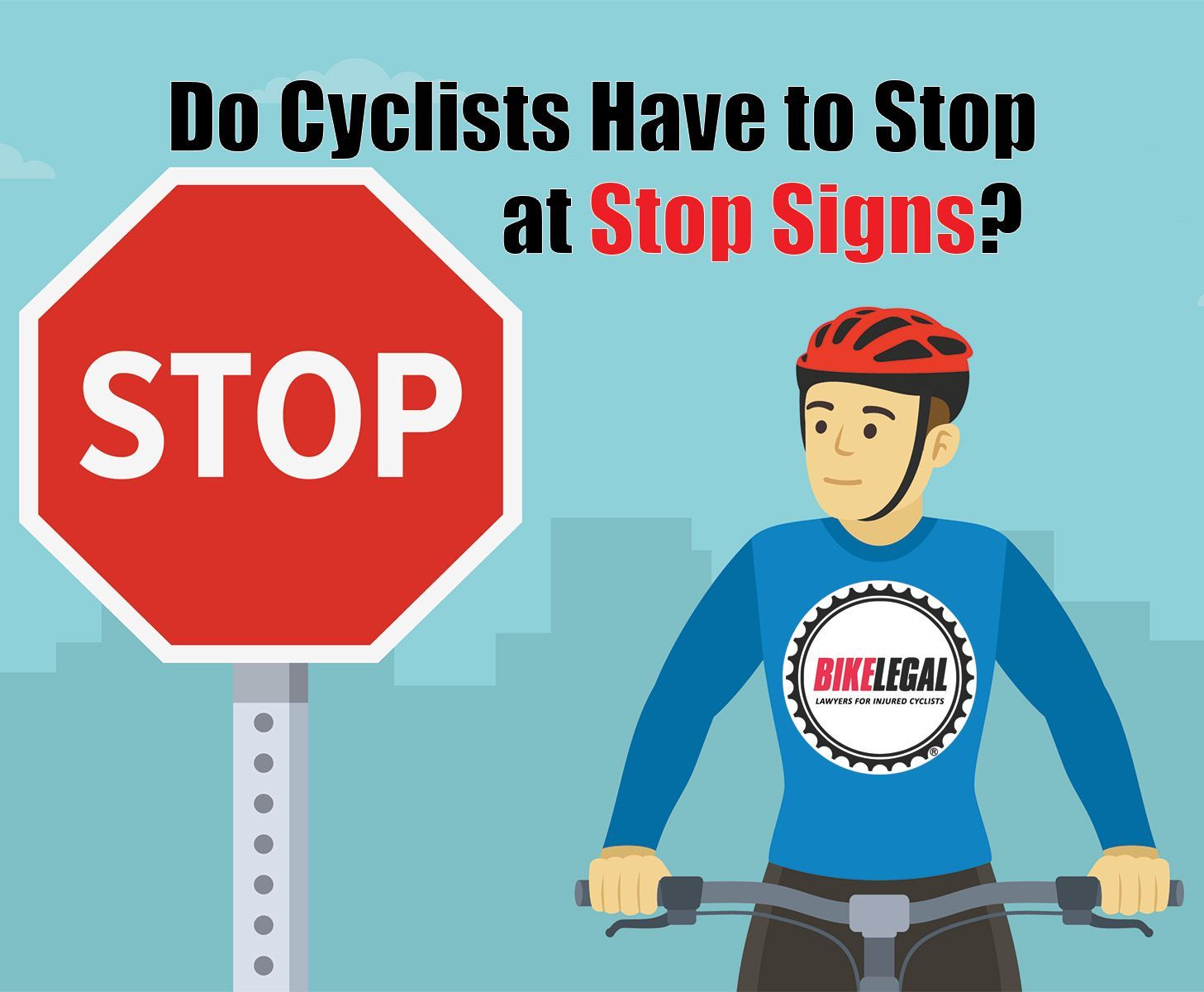
Do the rules of the road apply to cyclists in the same way they do to drivers?
It's a common question with a not-so-simple answer. Whether you're pedaling through city streets or rural roads, understanding the law and your obligations at stop signs is crucial for safety and legality. In 2021, 966 cyclists were killed in traffic crashes, underscoring the importance of knowing and following the rules. This article dives into the heart of the matter, offering clarity and guidance for cyclists and motorists everywhere.
In this read, you'll discover:
- The legal requirements for cyclists at stop signs
- An overview of rules and regulations specific to cyclists
- Exceptions and special considerations that could affect you
- Practical tips for safely approaching and navigating stop signs
- Insightful discussions on the ongoing debates surrounding cyclists and stop signs
Do Cyclists Have to Stop at Stop Signs? (The Short Answer)
Yes, cyclists are required to stop at stop signs in most jurisdictions, just like motor vehicles, to ensure road safety and compliance with traffic laws. However, some areas have adopted the "Idaho Stop" law, allowing cyclists to treat stop signs as yield signs under certain conditions, emphasizing the need for cautious and responsible riding. This variation highlights the importance of understanding local traffic regulations for cyclists.

The Legal Requirements for Cyclists at Stop Signs
When you're on two wheels, navigating the road and traffic demands not just awareness but a keen understanding of the law. Many cyclists wonder about their legal obligations at stop signs. Are they required to come to a full stop like motor vehicles, or can they cautiously roll through if the coast is clear? Let's clear up the confusion.
In most states, bicycles are considered vehicles when operated on the road, meaning cyclists must follow the same rules and responsibilities as motorists. This includes obeying all traffic signals and signage, which unequivocally includes stop signs.
The law is clear: when you approach a stop sign, a complete stop is required. This isn't just about legality; it's about safety.
However, the landscape of cycling laws is evolving. Some areas have adopted the "Idaho stop" or "stop as yield" law, allowing cyclists to treat stop signs as yield signs, and red lights as stop signs if it is safe to do so without waiting for the light to turn green.
This approach recognizes the differences in mass, speed, and acceleration between bicycles and motor vehicles. The law aims to improve traffic flow and safety for cyclists, encouraging cautious and responsible behavior at intersections.
Here's what you need to keep in mind:
- Obey the law: In most states, and jurisdictions, cyclists must come to a full stop at stop signs.
- Stay alert: Even if you have the right of way, ensure the way is clear before proceeding.
- Know your local laws: Some places allow cyclists to yield at stop signs. Familiarize yourself with local regulations.
Navigating the legalities of stop signs is crucial for every cyclist. It ensures not only your safety but also the safety of those sharing the road with you.
Rules and Regulations for Cyclists at Stop Signs
Navigating stop signs is a critical aspect of cycling safety and legality. Across the United States, while the core principle remains that cyclists must adhere to the same rules as motorists at stop signs, there are nuances and specific regulations that vary by state.
Here's a focused look at the rules relevant to cyclists at stop signs, highlighting both commonalities and unique state-specific regulations.
Common Stop Rules for Cyclists
- Full Stop Required: In most states, cyclists are required to come to a complete stop at stop signs, just as motor vehicles are. This means ceasing all forward motion and checking for oncoming traffic before proceeding. Some say "3 seconds" is enough.
- Right of Way: After stopping, cyclists must yield the right of way to pedestrians and other vehicles already in the intersection or approaching closely enough to pose a hazard.
- Foot Down Rule: While not a law in all states, it's a common misconception that cyclists must put a foot down to prove they've stopped. Legally, the requirement is to cease motion; however, some cyclists use the "foot down" as a clear signal to others that they have stopped. Skilled cyclists often perform a "track stand" (ability to balance on the bike without moving) instead of putting a foot down.

Caught in a stop sign snag or need clarity on cycling laws?
Bike Legal Firm is your go-to for navigating the legal landscape on two wheels. Reach out, and let's ensure your cycling journey is both safe and legally sound. Whether you need advice on cycling laws or representation after an incident, we're here to support you every pedal of the way.
The Idaho Stop Law
The Idaho Stop law, first implemented in Idaho in 1982, allows cyclists to treat stop signs as yield signs and red lights as stop signs under certain conditions. This law aimed to reduce court time spent on minor traffic violations by cyclists and to enable a more fluid movement in traffic, recognizing the unique dynamics of bicycle movement compared to motor vehicles.
Stop as Yield

In states that have adopted the "Idaho Stop" law, cyclists are allowed to treat stop signs as yield signs. This means that after slowing down and ensuring that the intersection is clear of traffic and pedestrians, cyclists can proceed without coming to a complete stop. This law recognizes the effort required to start and stop a bicycle and aims to maintain momentum when it's safe to do so.
The following states have adopted "roll through stop signs":
- Idaho (Year passed: 1982): Idaho was the first state to enact this law, setting a precedent for others.
- Delaware (2017): It took 35 years for an additional state to recognize the benefits of the stop-as-yield law, and this became known as the "Delaware Yield".
- Arkansas (2019)
- Oregon (2019)
- Washington (2020)
- Utah (2021)
- North Dakota (2021)
- Oklahoma (2021)
- Colorado (2022): Previously legal in certain jurisdictions since 2011, Colorado officially adopted statewide legislation in 2022.
- Washington DC (2022)
- Minnesota (2023)
- Alaska (2023): In Alaska, this rule is currently specific to the city of Anchorage.
Red Light as Stop
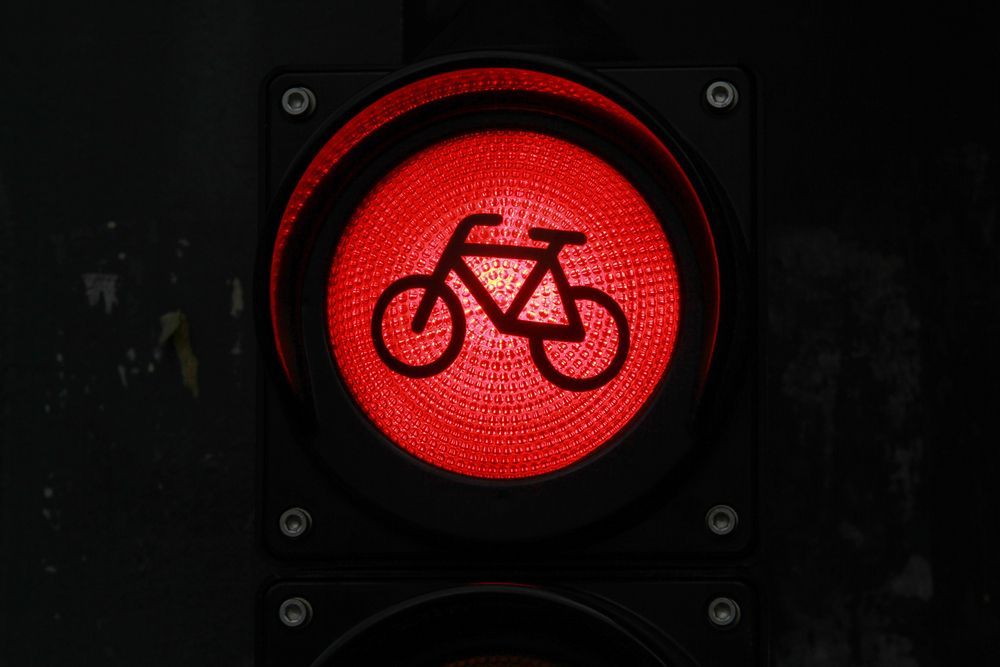
The "Red light as stop" variation is a subset of the Idaho Stop law, where cyclists are allowed to treat red lights as stop signs. This means that after coming to a complete stop, if the road is clear of traffic and pedestrians, cyclists can proceed through the intersection before the light turns green.
One of the reasons for the Red light as stop law is that traffic light sensors embedded in the road surface do not pick up a bicycle. Therefore, cyclists can get stuck waiting a long time for a vehicle to arrive and trip the sensor.
Below is a list of states that have implemented some version of the Red Light as Stop:
- Idaho (Year passed: 1982): Idaho was the first state to enact this law, setting a precedent for others.
- Arkansas (2019): Arkansas followed Idaho's lead, legalizing the treatment of red lights as stop signs for cyclists.
- Oklahoma (2021): In Oklahoma, cyclists have the legal backing to treat red lights as stop signs, provided they yield and ensure it's safe to proceed.
- Colorado (2022): Previously legal in certain jurisdictions since 2011, Colorado officially adopted statewide legislation in 2022.
- Alaska (2023): In Alaska, this rule is currently specific to the city of Anchorage.
This legislation represents a significant shift in traditional road rules, aiming to enhance cyclist safety and efficiency. The adoption of these laws indicates a growing recognition of the unique dynamics of cycling compared to motor vehicle operation. Cyclists need to be aware of these state-specific laws, as they vary considerably across the U.S.
Related Terms
The "Idaho Stop" law has been adopted or adapted in various forms across multiple states in the United States. The terminology used can vary by state. Here's a list of related terms and adaptations of the Idaho Stop law in different states:
- Delaware Yield: In Delaware, cyclists can treat stop signs as yield signs on two-lane roads. This adaptation is known as the "Delaware Yield."
- The Utah Yield: In 2021, Utah passed HB-142, known as the Utah Yield Law, allowing cyclists to treat stop signs as yield signs under certain conditions.
- Arkansas Stop: Arkansas adopted a version of the law similar to Idaho's, sometimes informally referred to as the "Arkansas Stop."
- Oregon Stop: Oregon's law, similar to the Idaho Stop, is occasionally referred to as the "Oregon Stop," particularly in local discussions.
- Colorado Safety Stop: Colorado's version of the Idaho Stop law.
- Stop as Yield: A common term used in various states to describe the action of treating stop signs as yield signs.
- Red Light as Stop: This term is used to describe the aspect of the law where cyclists can treat red lights like stop signs, proceeding through them after stopping and ensuring it's safe.
- Roll-and-Go or Rolling Stop: These terms are often used informally to describe the action of a cyclist slowing down at a stop sign but not coming to a complete stop before proceeding when safe.
- Dead Red laws (not directly Idaho Stop but related): In some states, "Dead Red" laws allow cyclists (and sometimes motorcyclists) to proceed through a red light if the sensor fails to detect their vehicle after a reasonable period.
- Bicycle Yield: This term is sometimes used to specifically emphasize the action of yielding at stop signs as a cyclist.
Benefits of the Stop as Yield Law
The "Stop as Yield" law caters to the unique dynamics of cycling, offering significant benefits for road safety and efficiency. It allows cyclists to yield at stop signs instead of coming to a full stop, helping preserve momentum and reduce the physical effort required for repeated stops and starts.
This is particularly beneficial in urban areas with numerous stop signs, enhancing cyclists' commute efficiency and reducing exhaustion.
- Increased Efficiency: The extra effort required to accelerate a motionless bicycle and rider back up to speed to get through an intersection is not only physically taxing, it slows the overall average speed of the ride by up to 39%. Cyclists can maintain momentum, reducing the physical exertion required for repeated stops and starts. This is especially beneficial in urban areas with frequent stop signs.
- Improved Safety: By focusing on yielding and proceeding when safe, cyclists can navigate intersections more smoothly and avoid the risks associated with fully stopping, like losing balance or getting into blind spots in vehicles.
- Keep Traffic Moving: Allowing bicyclists to proceed cautiously provides continuous momentum for everyone. This means that both cyclists and other motorists arrive at their destinations sooner.
- Enhanced Visibility: Moving through an intersection after yielding, rather than waiting at a stop sign, can make cyclists more visible to motorists, reducing collision risks.
- Energy Conservation: Continuous stopping and starting is physically demanding for bicyclists. The stop-as-yield law allows them to conserve energy long-term, making cycling a more viable and attractive mode of transportation.
- Predictable Behavior: These laws standardize cyclists' actions at stop signs, leading to more predictable behaviors that motorists can anticipate.
Furthermore, the law improves safety by enabling cyclists to navigate through intersections more smoothly, thus avoiding common risks such as losing balance or entering vehicle blind spots.
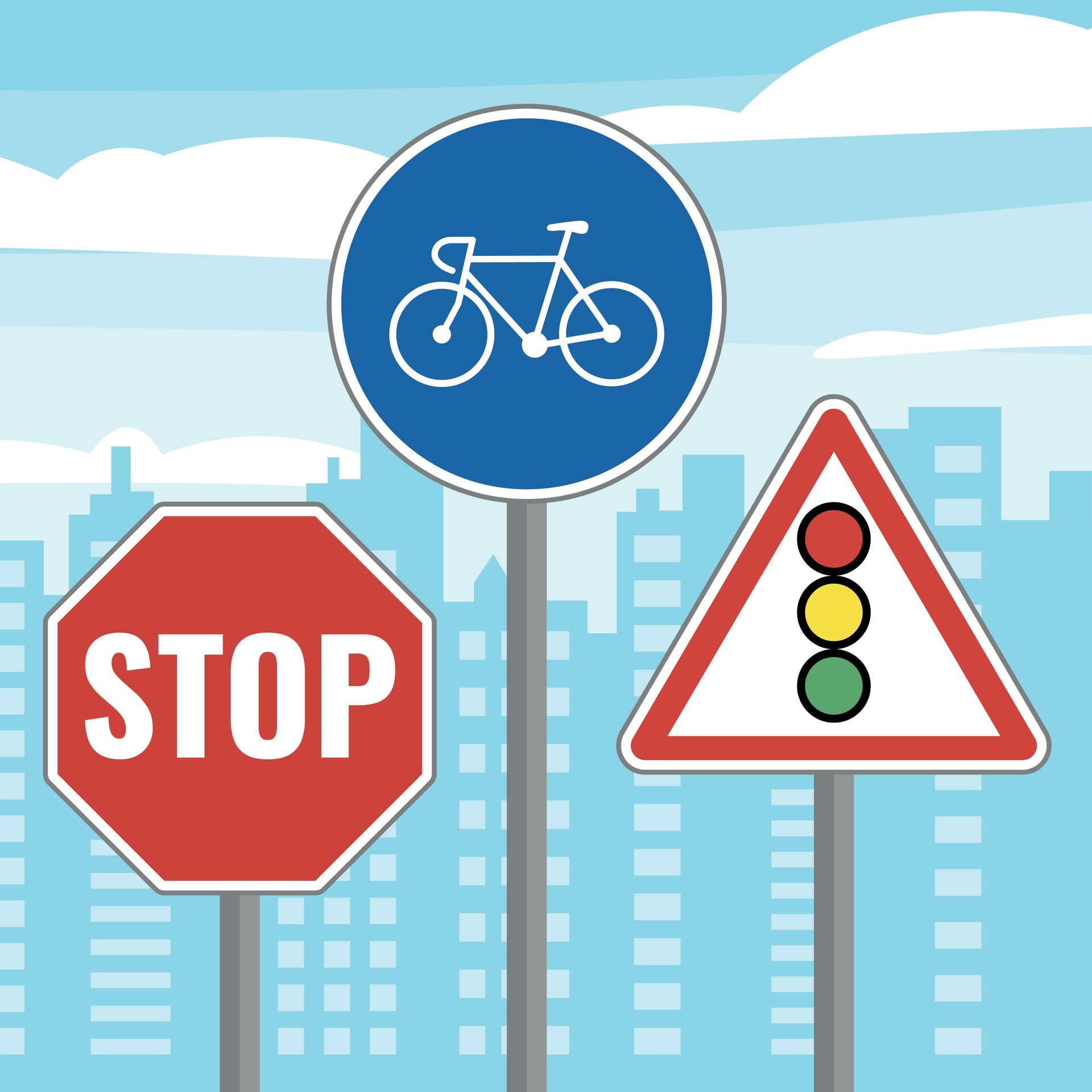
Arguments Against Adopting the Stop as Yield Law
As you might have noticed, not all states have adopted the stop-as-yield law. There are several arguments commonly presented against adopting laws similar to the "Idaho Stop" for cyclists, such as the reasons the California governor has repeatedly vetoed attempts to pass such laws.
These arguments typically center around concerns for safety, predictability, and road-sharing principles:
- Safety Risks: Fears that different rules for cyclists might increase accidents, particularly in busy areas.
- Uniform Road Rules: Advocating for all road users to follow the same rules to avoid confusion and ensure predictability.
- Collision Potential: Concerns that these laws could lead to misunderstandings at intersections, possibly causing more accidents.
- Enforcement Difficulties: Challenges for law enforcement in applying different sets of rules for cyclists and motorists.
- Public Perception Issues: Worries about the perception of giving cyclists preferential treatment.
- Legal Ambiguities: Potential complexities in legal situations involving cyclists at intersections.
- Inconclusive Research: Citing the need for more studies to conclusively demonstrate the safety benefits of such laws.
Bicycle laws differ from those for cars because bikes and cars are fundamentally different. Cyclists exert more physically and need to balance, making stop-and-start rules, like at stop signs, tougher for them than for car drivers. Bikes are slower and lighter, so they interact with traffic and roads differently.
Cyclists also see more around them and react faster than car drivers, who are in enclosed spaces. These differences mean cyclists need laws tailored to their unique road experience, ensuring safety and promoting cycling as a green and healthy way to travel.
Practical Tips for Safely Approaching and Navigating Stop Signs
Navigating stop signs is a fundamental part of cycling that requires both knowledge of the law and practical, on-the-road savvy. Here are some practical tips to ensure you approach and navigate stop signs safely and confidently.
- Slow Down Early: Begin reducing your speed as you approach the stop sign. This gives you ample time to observe the traffic conditions, assess any potential hazards, and signal your intentions to other road users.
- Look and Listen: Use all your senses to assess the situation. Look for oncoming vehicles, pedestrians, and other cyclists. Listen for engines, horns, or anything that might indicate the approach of a vehicle you can't see.
- Make Eye Contact: When possible, make eye contact with drivers at the intersection. This helps ensure they've seen you and are aware of your intention to proceed or cross.
- Signal Your Intentions: Always signal your turns or if you're proceeding straight through an intersection. Use clear hand signals to communicate with drivers and pedestrians, making your actions predictable.
- Position Yourself Properly: Position yourself in the lane to make your intended actions clear to others. If turning left, move to the center or left side of the lane when it's safe to do so. If proceeding straight, stay to the right but not so far that you might encourage drivers to squeeze past you dangerously.
- Take Turns: Respect the right-of-way rules. If another vehicle has arrived at the intersection before you, allow them to proceed first. If you arrive simultaneously with a car to your right, they have the right of way.
- Proceed with Caution: Even if you have the right of way, proceed with caution. Ensure that all vehicles and pedestrians have acknowledged your presence and are stopping before you move through the intersection.
- Be Prepared to Stop: Always be prepared to come to a complete stop at a stop sign. Even if you're familiar with the intersection, conditions can change, and unexpected hazards may arise.
- Use Lights and Reflective Gear: Especially important in low-light conditions, but a good practice at all times. Use a front white light, rear red light, and reflective materials to increase your visibility to others.
- Practice Defensive Cycling: Always anticipate the actions of others and be prepared for unexpected moves. Assume that drivers may not see you and be ready to stop or take evasive action if necessary.
By following these tips, you can navigate stop signs safely and effectively, ensuring a safer ride for yourself and those around you. Remember, the key to safe cycling is predictability, visibility, and clear communication with other road users.
Insightful Discussions on the Ongoing Debates
The debate around cyclists and stop signs is as lively and dynamic as the streets we ride on. From Reddit threads to city council meetings, the conversation spans safety, efficiency, and the evolving landscape of urban mobility.
Here's a dive into the heart of the discussion, touching on key points and varied perspectives that fuel this ongoing debate.
The Colorado Safety Stop: A Case Study in Change
Colorado's adoption of the "Safety Stop" law has sparked significant discussion. This law allows bike riders to treat stop signs as yield signs and red lights as stop signs under certain conditions.
Proponents argue it recognizes bicycles as low-speed conveyances that can safely navigate intersections without fully stopping, thus improving flow and safety. Critics, however, raise concerns about potential increases in bicycle accidents, emphasizing the need for clear rules and mutual respect among all road users.
The "Roll Through" Stop Signs Debate
A common point of contention is the practice of cyclists rolling through stop signs, often referred to as the "Idaho stop" after the first state to legalize it. Supporters claim it allows cyclists to maintain momentum, making rides more efficient and less physically taxing.
Detractors worry about the ambiguity it introduces in traffic interactions, potentially leading to confusion and accidents.
Bike Lanes and Intersection Safety
The presence of bike lanes at intersections doesn't always clarify the situation. While bike lanes are designed to provide a safe space for cyclists, the rules at intersections, particularly with stop signs, can still be unclear.
The debate often centers on whether bike lanes should offer cyclists a different set of rules at stop signs, such as allowing a yield instead of a stop, especially when the bike lane is clear of traffic.
The Physics of Cycling and Stopping
Discussions also delve into the physical effort required for bike riders to stop and then start again at stop signs. This effort is not trivial, especially on routes with frequent stops, leading some to argue for laws that consider the physical nature of cycling.
They suggest that traffic laws should balance safety with the practical realities of cycling, proposing measures like the Idaho stop as solutions.
Safety, Efficiency, and Coexistence
At the core of the debate is a search for the best way to ensure safety and efficiency for all road users. This includes considering how cyclists, as more vulnerable users compared to motor vehicles, can safely coexist with cars, pedestrians, and other road users.
The discussion often emphasizes the need for education, infrastructure improvements, and laws that reflect the diverse needs of modern urban environments.
The Role of Enforcement
Enforcement of existing laws, whether they require cyclists to stop fully at stop signs or allow them to roll through under certain conditions, is a critical aspect of this debate. Consistent enforcement, coupled with public education about the rules, is often cited as essential for making any set of regulations effective and for reducing bicycle accidents.
The conversation around cyclists and stop signs is ongoing, reflecting the complexities of shared road use in a changing world. As cities evolve and seek to accommodate various forms of transportation, the dialogue continues, aiming to find a balance that respects the rights and safety of everyone on the road.
Ride Smart, Stay Safe with Your Ally on the Road:
Bike Legal Firm
Navigating the roads on two wheels brings its unique set of challenges and rewards. This guide aimed to shed light on the intricacies of cyclists and stop signs, ensuring you're equipped with the knowledge to ride safely and confidently.
Here's a quick recap:
- Understand the full stop and yield laws in your area.
- Practice the Stop as Yield where applicable.
- Make eye contact and signal intentions at intersections.
- Stay informed on local bike lane regulations.
- Prioritize safety and respect in shared spaces.
At Bike Legal Firm, we understand the road from a cyclist's perspective. Whether you're rolling through stop signs or navigating busy city intersections, we're here to ensure your rights are protected and your rides are safe.
Need legal advice or representation? Dive into our testimonials and see the results we've achieved for cyclists just like you.
Frequently Asked Questions (FAQs)
Why don't cyclists stop at stop signs?
Many cyclists choose not to stop at stop signs to maintain momentum, making their ride more efficient and less physically taxing. However, this practice can vary based on individual judgment, local laws, and the specific traffic situation.
What should a cyclist do at a stop sign?
At a stop sign, a cyclist, like a motor vehicle, should come to a complete stop, check for oncoming traffic and pedestrians, and proceed only when it's safe. Cyclists may treat stop signs as yield signs under certain conditions in areas with the "Idaho stop" or similar laws.
Do cyclists have to stop at stop signs in California?
In California, cyclists are currently required by law to fully stop at stop signs, as per general traffic rules. Efforts to change this through the Bicycle Safety Stop Bill, which would allow a yield-instead-of-stop approach for cyclists, have been vetoed twice due to safety concerns. Therefore, until any legal changes are enacted, cyclists must stop completely at stop signs in California.
Do bicycles have to stop at stop signs in Texas?
Yes, in Texas, bicycles are required to follow the same rules as motor vehicles at stop signs. This means coming to a complete stop, yielding the right of way to other vehicles and pedestrians, and proceeding only when it's safe to do so.
